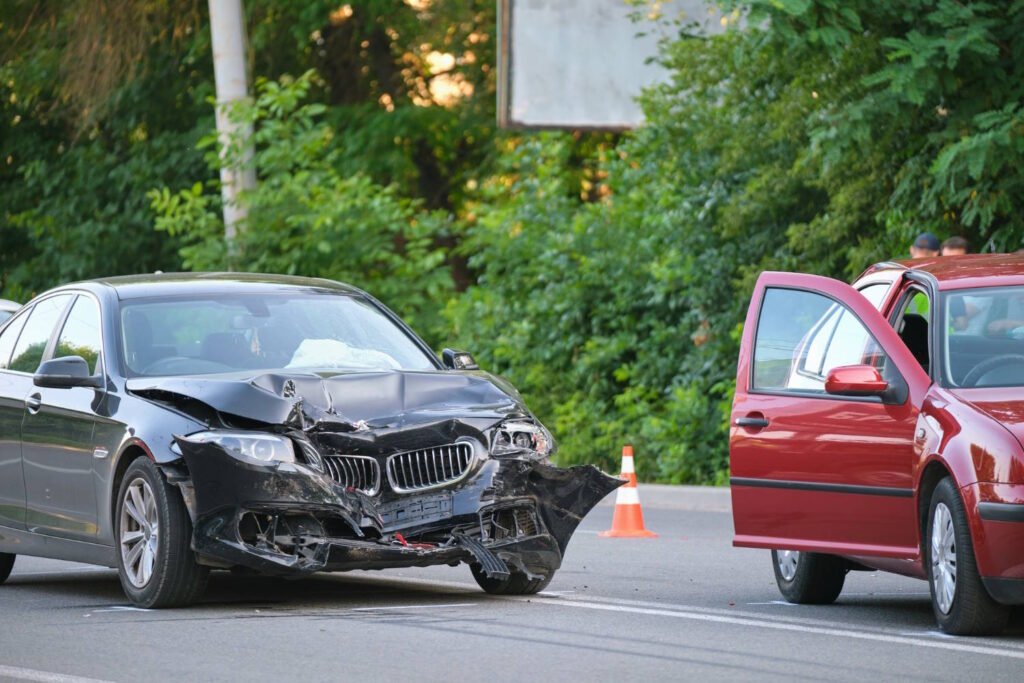Traffic accidents can happen to even the most careful drivers. With over 17,000 vehicle accidents occurring daily in the United States, knowing how to respond properly is crucial for your safety, legal protection, and insurance claims. This guide will walk you through the steps to take if you find yourself involved in a traffic accident.
1. Ensure Safety First
Your immediate priority after an accident is safety. If possible, move your vehicle to the shoulder or a safe location away from traffic. According to the Iowa Department of Transportation, for every minute a lane of traffic is blocked on the interstate, the risk of a secondary crash increases by approximately 2.8 percent.
Many states have “Steer It-Clear It” laws requiring drivers to move vehicles out of driving lanes if the vehicles are operational and can be safely moved. This helps prevent secondary accidents and keeps traffic flowing.
If you can’t move your vehicle, turn on your hazard lights, and if available, set up reflective triangles or flares to warn other drivers.
2. Check for Injuries
Check yourself and your passengers for injuries. If anyone is hurt, call 911 immediately. Even seemingly minor injuries should be evaluated by medical professionals, as some injuries may not be immediately apparent.
3. Call the Police
It’s generally advisable to call the police from the accident scene, even for minor accidents. Law enforcement can help determine any traffic violations, assist with injuries, and create an official record of the incident.
In most states, you’re legally required to report accidents that involve injuries, deaths, or property damage above a certain threshold (typically $500-$2,000, depending on the state).
4. Exchange Information
While waiting for the police to arrive, exchange information with the other driver(s) involved. Be sure to collect:
- Full name and contact information
- Insurance company and policy number
- Driver’s license number
- License plate number
- Make, model, and year of the vehicle
- Location of the accident
Remember to remain calm and polite during this process, regardless of who you believe is at fault.
5. Document the Scene
Thorough documentation can be invaluable for insurance claims and potential legal proceedings:
- Take photos of all vehicles involved, showing the damage from multiple angles
- Photograph the overall accident scene, including road conditions, traffic signs, and skid marks
- Note the time, weather conditions, and any relevant details about how the accident occurred
- Get contact information from any witnesses
6. Be Careful What You Say
While at the scene, be mindful of your statements. Avoid admitting fault or making accusations. Stick to exchanging the necessary information and describing what happened factually. Even saying “I’m sorry” could be interpreted as an admission of guilt.
7. File an Insurance Claim
Contact your insurance company as soon as possible after the accident. Most insurers allow you to start the traffic accident claim process online or through a mobile app. Be prepared to provide the information you collected at the scene.
Even if you believe you weren’t at fault, you should still notify your insurance company about the accident. Many policies require prompt reporting of any incident, regardless of fault.
8. Seek Medical Attention
If you didn’t require emergency medical care at the scene, it’s still wise to see a doctor within a few days of the accident. Some injuries, particularly those affecting the neck and back, may not cause symptoms immediately.
Additionally, medical records linking your injuries to the accident will be important if you need to file an insurance claim for personal injuries.
9. Keep Track of Expenses
Maintain detailed records of all accident-related expenses, including:
- Medical bills and records
- Repair estimates and bills
- Rental car costs
- Lost wages due to time away from work
- Any other expenses resulting from the accident
10. Consider Consulting an Attorney
If the accident resulted in significant injuries, disputed fault, or insurance complications, you might benefit from consulting with a personal injury attorney. Many offer free initial consultations to evaluate your case.
Special Circumstances
Hit and Run Accidents
If you’re involved in a hit and run accident, try to note the other vehicle’s license plate number, make, model, and color. Report the incident to the police immediately, and contact your insurance company to determine coverage for the damages.
Accidents with Uninsured Motorists
If the other driver is uninsured or underinsured, you may need to rely on your own insurance coverage. Many policies include uninsured/underinsured motorist coverage specifically for these situations.
Crashes Involving Commercial Vehicles
Accidents involving commercial vehicles often involve additional complexities due to federal regulations and potentially multiple liable parties (driver, trucking company, maintenance contractors, etc.). In these cases, legal consultation is particularly advisable.
Prevention for the Future
While you can’t control other drivers, you can take steps to reduce your risk of future accidents:
- Avoid distractions like cell phones
- Never drive under the influence of alcohol or drugs
- Maintain proper following distance
- Adjust driving for weather conditions
- Keep your vehicle well-maintained
By understanding what to do before an accident happens, you’ll be better prepared to handle the situation calmly and effectively if you ever find yourself involved in one.



